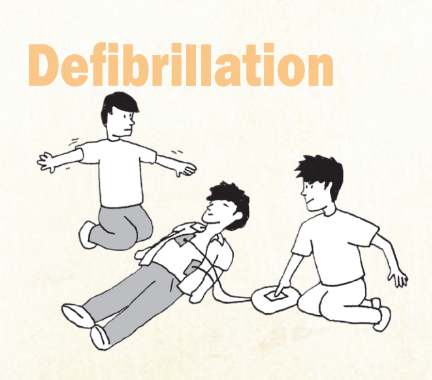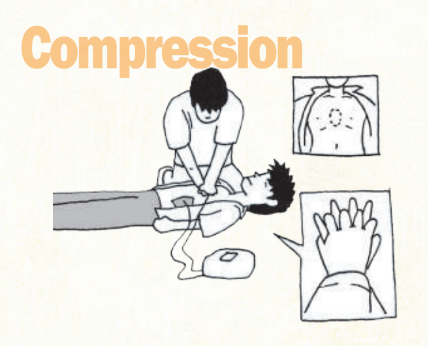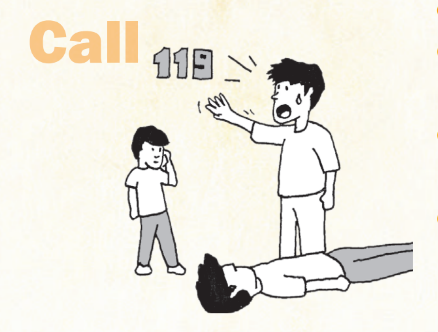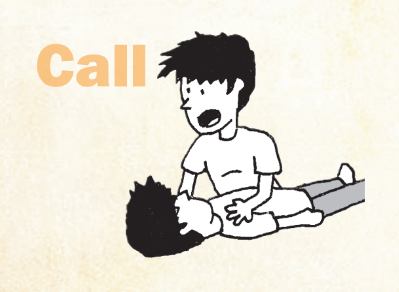Cardiopulmonary Resuscitation (CPR)
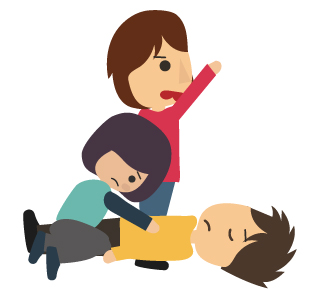
The purpose of cardiopulmonary resuscitation (CPR) is to prevent a victim's brain from a lack of oxygen by pushing down on the center of the victim's chest to maintain the blood cycling. CPR should be carried out within 4 minutes of the victim losing their heartbeat.
Bystander CPR: Call → Call → Compression → Defibrillation
If you have confirmed the environment around the patient is safe and the patient is unresponsive, follow the steps listed below:
Call the patient
Identify whether the patient is conscious or not. You can pat the patient's shoulder lightly and say, "Are you OK?"
Calling for help
If you are alone, yell loudly to let the people nearby come to help and call 119 immediately.
If there are other people nearby, ask them to call 119 and try to get an automated external defibrillator (AED).
Confirm breathing condition: no breathing or barely breathing.
Chest compression
Push down on the center of the chest (the line between two nipples).
Push hard and fast at the depth about 5-6 centimeters and the rate of 100-120/minute (about twice per second).
Continue chest compression until the person exhibits signs of life, such as breathing, an AED becomes available, or paramedics or an AED arrive.
Defibrillation
After an AED is available, one person continues chest compression, and another turns on the AED. Follow the instruction of the AED and emergency assistance (If AED is not available, continue chest compression until provide emergency personnel arrive.
Bystander CPR: Call → Call → Compression → Defibrillation
If you have confirmed the environment around the patient is safe and the patient is unresponsive, follow the steps listed below:
Call the patient
Identify whether the patient is conscious or not. You can pat the patient's shoulder lightly and say, "Are you OK?"
Calling for help
If you are alone, yell loudly to let the people nearby come to help and call 119 immediately.
If there are other people nearby, ask them to call 119 and try to get an automated external defibrillator (AED).
Confirm breathing condition: no breathing or barely breathing.
Chest compression
Push down on the center of the chest (the line between two nipples).
Push hard and fast at the depth about 5-6 centimeters and the rate of 100-120/minute (about twice per second).
Continue chest compression until the person exhibits signs of life, such as breathing, an AED becomes available, or paramedics or an AED arrive.
Defibrillation
After an AED is available, one person continues chest compression, and another turns on the AED. Follow the instruction of the AED and emergency assistance (If AED is not available, continue chest compression until provide emergency personnel arrive.
Update:112-08-18

